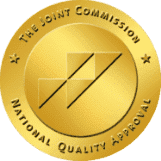How Long Does Rehab Last?
How Long Does Rehab Last?
When considering treatment for substance abuse, one of the most common questions is, “How long is rehab?” Rehab programs vary in length depending on the individual’s needs, the type of addiction, and the specific facility’s program offerings.
Understanding the various timelines involved in rehab—from short-term detox programs to long-term inpatient stays—can help individuals and families plan for a more successful recovery journey.
Find Help Now
In this guide, we’ll explore the typical durations for both inpatient and outpatient rehab, the benefits of extended care options, and how treatment timelines differ for drug versus alcohol rehab.
How Long Is Inpatient Rehab?
Inpatient rehab programs are typically designed to last from 30 to 90 days, though some treatment centers offer shorter or longer durations based on client needs. The initial phase usually involves detox, lasting up to one week, followed by intensive therapy.
Standard 30-day programs allow for a foundational recovery, while 60- or 90-day programs provide additional time to build coping mechanisms and address deeper behavioral patterns.
Some facilities also offer extended inpatient care beyond 90 days, especially for individuals needing a more intensive focus on mental health and dual diagnosis disorders.
What is the Average Length of Stay in Addiction Treatment?
The average length of stay in addiction treatment is 30 to 60 days.
However, studies show that longer treatment durations lead to better long-term outcomes, allowing individuals more time to address the root causes of addiction, practice new coping strategies, and gradually transition to everyday life. While some people may benefit from a short-term program, those with a history of relapse or severe addiction may find success in longer rehab durations of 90 days or more.
The Process of Treatment
Rehab typically begins with detox, followed by the main treatment phase, and then aftercare planning:
- Detox: Usually the first week, focused on safely managing withdrawal symptoms.
- Therapy and Counseling: The core of the program, where individuals receive individual and group therapy, as well as family therapy when needed. This phase involves addressing underlying causes of addiction and developing coping strategies.
- Aftercare Planning: Creating a support plan to help clients transition back to daily life, often including outpatient treatment, sober living, or support groups.
Extended Care Options
Extended care provides additional support beyond the primary rehab stay, helping prevent relapse and maintain sobriety.
Extended care options may include partial hospitalization programs (PHP), intensive outpatient programs (IOP), and sober living homes. Some individuals choose to extend their stay or move to a sober living environment where they can receive continued support in a structured, sober community.
How Long Is Drug Rehab vs Alcohol Rehab?
The timeline for drug and alcohol rehab can vary due to different withdrawal symptoms and treatment needs:
Drug Rehab: The length of drug rehab depends on the substance involved and the level of addiction. Detox for drugs like opioids or benzodiazepines may take longer, requiring more extensive care afterward.
Alcohol Rehab: Alcohol rehab often requires a similar timeline, though detox can be especially challenging due to the potential for severe withdrawal symptoms. Alcohol rehab may benefit from longer durations, as alcohol use disorders often involve deep-rooted social, physical, and psychological dependencies.
Inpatient vs. Outpatient Rehab
Inpatient rehab provides a structured environment where clients live on-site and participate in daily therapy sessions, while outpatient rehab allows individuals to live at home and attend therapy on a scheduled basis.
- Inpatient Rehab: Usually lasts 30 to 90 days and is ideal for those needing a break from external triggers or a supportive community.
- Outpatient Rehab: Length can vary and is often longer-term, with many programs spanning several months to a year for ongoing support. Outpatient care is suitable for those with mild dependencies or as a step-down from inpatient treatment.
Benefits of Inpatient Rehab
Inpatient rehab provides clients with a structured, supportive environment away from triggers and distractions. Key benefits include:
- 24/7 Medical Supervision: Ensuring safety, especially during detox.
- Structured Routine: Daily schedules help build new habits.
- Peer Support: Building a network of others going through similar experiences.
Inpatient care is highly recommended for those needing immediate, intensive care or who have not succeeded in outpatient programs alone.
Benefits of Long-Term Rehab
Long-term rehab programs, typically those lasting 90 days or more, allow for a deeper exploration of underlying issues, giving individuals time to fully engage in therapy and develop stronger coping strategies. Benefits include:
- Improved Outcomes: Longer stays have been shown to reduce the risk of relapse.
- Mental Health Support: Extended time to address co-occurring mental health disorders.
- Stronger Foundation for Sobriety: Time to develop resilience and relapse prevention skills.
Find Drug Rehab in Los Angeles Today
If you or a loved one is ready to take the first step, our compassionate team is here to help you understand your options and find a treatment plan that meets your unique needs.
Contact us today to learn more about our rehab programs, from short-term detox to comprehensive long-term care, and take the first step toward a brighter, sober future.




